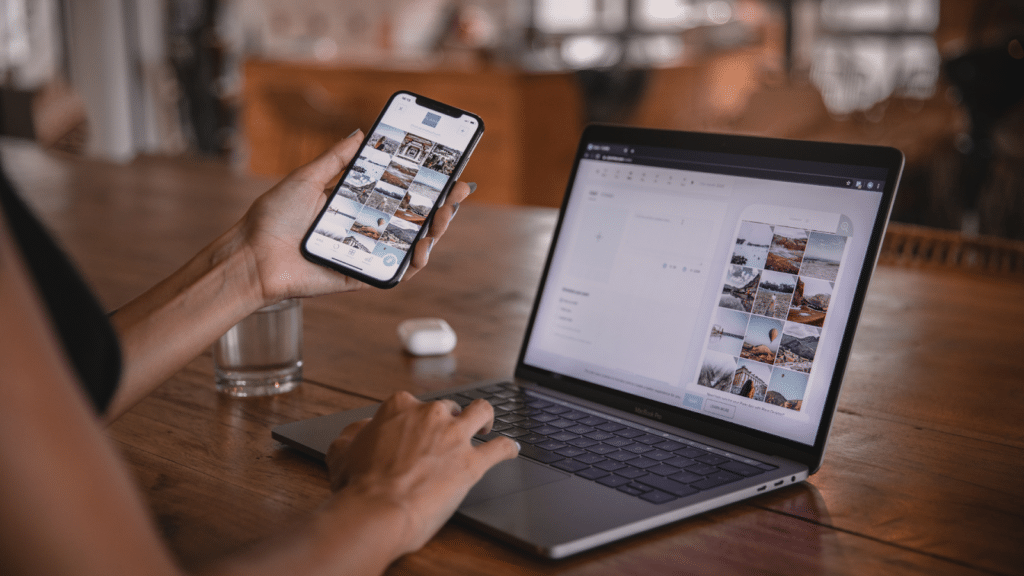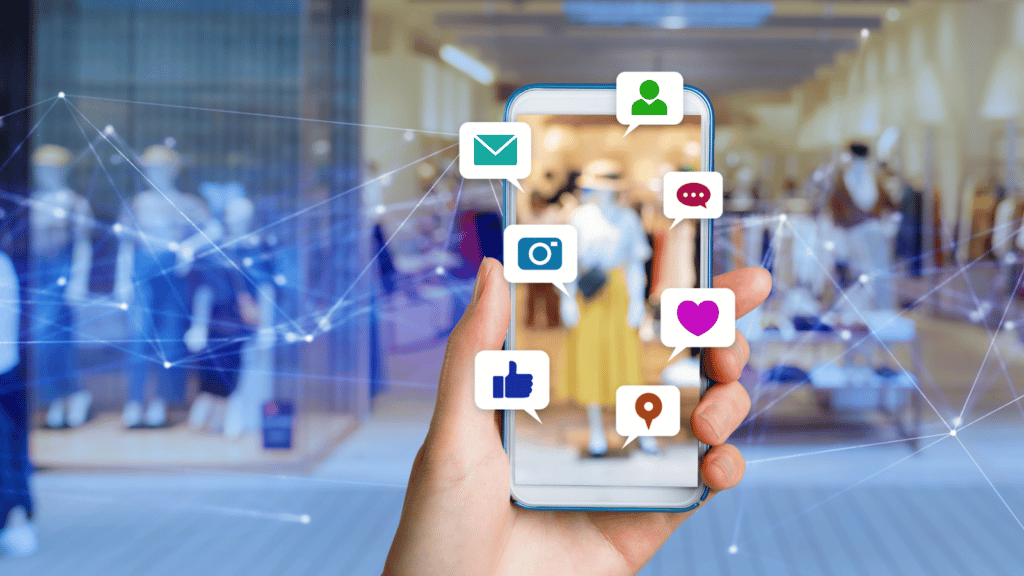
Six Types of Social Media Influencers And Their Benefits
Last Updated on September 27, 2022 by Valerie Jennings
Types of Social Media Influencers For Businesses
As more and more companies start using content personalization as part of their digital marketing strategy, competition for your customers’ attention will increase. Content has become a critical aspect of marketing, and many companies prioritize it over their advertising budgets. As a result, there will be an increasing demand for content creators who can create engaging and meaningful experiences for their audiences. In 2021, the market soared to $13.8 billion, indicating steady growth. This year, the market is projected to expand to a whopping $16.4 billion industry, according to Influencer Marketing Hub.
Influencers already have a trusted following, which means their audience values their opinion far more than they do traditional advertising. Startup Bonsai reports that 80% of consumers have purchased something via an influencer recommendation and around three in four consumers would spend up to $629 on influencer-inspired purchases. However, it’s not only customers who trust influencers. According to the Digital Marketing Institute, 51% of marketers say influencer marketing helps them acquire better customers.
Types of Social Media Influencers
Influencers can help you reach a relevant audience in various channels at a relatively low cost. In addition, influencer marketing campaigns can be measured differently, making tracking results easier. Investing in talent and training them appropriately will become even more critical as your content-oriented marketing strategies become increasingly vital to your company’s success. When brands find the right type of influencer to work with, they make five times more than what they spend, so selecting influencers who will have the most significant impact based on your specific goals is important.
- Mega-influencers or celebrities are users with over a million followers. They are typically famous for their careers such as acting, singing, professional sports or internet personalities and have then developed large followings on social media. They can reach massive general audiences for maximum exposure, but for a heavy price.
- Macro-influencers have a following of between 100,000 and one million. They are often content creators who rose to fame online, including bloggers, vloggers and podcasters. They help create user-generated content to build brand recognition and visibility.
- Mid-tier influencers haven’t reached celebrity status yet but still serve as a trusted source to their following of 50,000 up to 500,000. They can provide a broad reach with more engagement and are oftentimes experienced content creators.
- Micro-influencers have established themselves as credible sources of recommendations in targeted areas and have a following of between 1,000 and 100,000. They tend to have strong rapport and credibility and high engagement in their niche.
- As influencers grow in follower count, they typically bring in less engagement. Nano-influencers may only have between 1,000 and 10,000 followers, but they have the highest engagement rate of any influencer type with authentic and personalized content. They also tend to be more cost-effective.
- Employees can offer a unique insider perspective in a powerful way to build trust with potential customers. They are ambassadors for a brand’s culture and contribute to what makes that company stand out.
Influencer Marketing Trends for B2C and B2B
Influencer marketing is now one of the fastest growing marketing channels and shows no sign of slowing down just yet. According to Digital Marketing Institute, major brands plan to increase their budgets over the next 12 months with 82% of people trusting social networks to guide their purchasing decisions. Through original, thought-provoking content, influencers help shine a spotlight on your products by getting in front of their entire audience at a minimal cost to your company.
- Relatability is key: Don’t look for an influencer with tunnel vision toward one specific type of influencer. Many make the mistake of looking for celebrities, while studies and stats show nano- and micro-influencers are much more effective. Why? Because they’re more relatable and tend to have much stronger connections with their audiences. While they might not have as many followers, their engagement rates are much higher, as they are much more relatable.
- Long-term relationships: As influencer marketing gains popularity, trends expect contracts and long-term relationships. According to Afluencer, businesses are hiring influencers on an ongoing basis to increase their reach and brand loyalty. It’s important to keep an eye out for scams and perform risk assessments on potential influencers – as we do in our Influencer Marketing Program.
- Ongoing influencer programs: Most businesses using influencer marketing programs use periodic campaigns, but recent studies have shown that always-on campaigns are up to 12 times more effective. According to Top Rank Marketing, only 19% of businesses use always-on campaigns.
Influencer Marketing Best Practices
As influencer marketing has been around for a while, we have had the opportunity to establish best practices. Here are ten best practices we use and our tips on how to run a successful campaign:
- Authentic content: Consumers see right through “sales-y” endorsements, which is why a genuine voice of an influencer to tell their personal experience has been proven to make audiences listen. According to Influencer Marketing Hub, influencers are asking for more creative control and 83% regard it as their top priority. It is also reported that more than 90% of marketers say proving authenticity is the most significant factor for the future of influencer marketing.
- Selecting influencers with the same culture and values as your brand, who are experts in your niche: The most critical part of selecting influencers for your brand is to find ones that align with your values and company culture. Most influencers will only promote products that would be of value to their audience, which is the very point of influencer marketing. If something seems out-of-place, consumers tend to catch on pretty quickly.
- How to reach out: After researching and choosing what types of influencers you want to target, it’s time to reach out. Respona recommends crafting a pitch to catch the influencer’s attention. Most influencers have a busy email list, so you want to make sure you stand out – starting with your subject line. Your pitch should include what you would like them to do for you, including specifics and timelines.
- Work with multiple influencers at once: If one influencer helps increase your reach and engagement, imagine what numerous would do for your brand! Hiring multiple influencers for the same campaign can show your audience different perspectives of your product/brand.
- Set goals for your campaign: Goals are necessary to run a successful influencer campaign. Whether your goal is to drive conversions, increase sales or generate brand awareness, it’s important to choose influencers who will help you achieve your goals. For example, if you’re trying to gain new customers, choose an influencer who hasn’t posted about your brand/product before. If you’re trying to reach a new market, choose an influencer in your niche.
- Influencer marketing software can help you narrow it down: It is a great start when finding the right influencers for your brand, as their built-in searchable marketplaces allow organizations to discover new influencers for their campaigns. You can filter by age, gender, location, number of followers, engagement rates, follower demographics, etc.
- Set guidelines: Setting guidelines is extremely important as you want to ensure you and your influencer are on the same page. These typically require the influencer to mention your brand in the post and tag your business’ account. You might also have certain links, hashtags or discount codes you want to be included. It’s also imperative that the influencer discloses that the post is sponsored, as the Federal Trade Commission requires it.
- Give your influencers creative leeway: While you want to make sure to discuss the main objectives of the campaign, you should also give them creative freedom. Their followers follow them for a reason, so you want to ensure their promotions are as genuine and personalized as possible. You can always give your influencers inspiration and examples for captions, but you always want to make sure they personalize them and make them their own.
- How to measure your campaigns: The best way to measure the success of a campaign is to find the Return On Investment (ROI) through impressions, reach engagement (likes, comments, shares), conversions, traffic and sales. Three-fourths of marketing and communications professionals say verified web traffic of an influencer is the most important criterion when selecting an influencer.
- Compensation: You want to fairly compensate your influencers for their work. Firstly to keep your influencers happy, but also because it can hurt your brand if you don’t. According to impact.com, Instagram is a cost-effective channel with an average price of $10 per post, per 1,000 followers while Facebook’s average sits around $25 per post, per 1,000 followers. TikTok influencers charge anywhere from $5 to $2,500 per post. It is also important to account for other aspects of your budget such as marketing software, employee salaries, product/service costs and content usage rights to conduct your campaign as efficiently as possible.
Potential Challenges
While influencer marketing continues to grow rapidly, there are still some hurdles that brands face. Approximately 10% of Instagram accounts are bots or fake accounts. Many of these bot accounts follow creator accounts, making it seem that they have more followers and engagement than they really do. People do this in hopes of getting a shortcut to receiving success and becoming an influencer, but it can hurt your brand if it’s realized too late. Here are some of the most common signs of an account with fake followers:
- They have a lot of followers but low engagement.
- Several posts for a few days, but then less to none.
- Blank bio or copied profile sections.
- Irrelevant comments.
If unsure of whether an account is genuine, you can use audit tools to spot fake followers and likes. These tools can give you a score on the authenticity of their account and how valuable it would be for your brand.
Need Help with Influencer Marketing?
JSMM has worked with a wide range of influencers in different industries, from pets to veterinarians and sports to lifestyle. Our verticles include travel and tourism, luxury lifestyle, automotive, aesthetics and health care. We do everything from content creation to giveaways and trackable sales/leads programs. Our core focus is to develop quality content that clients can cross purpose across platforms to build their brand and foster more community and lifestyle engagement. Each client is different and, therefore, treated uniquely. Our goal is to increase qualified leads and sales while managing budgets. For examples of our work, check out our portfolio, including influencer campaigns we have done for clients.



suresh
The examples provided in this article really helped me understand the concept better. It’s amazing how micro-influencers can have such a significant impact on local businesses. I wonder if there are any specific strategies to approach them effectively? Looking forward to more detailed content on this topic!